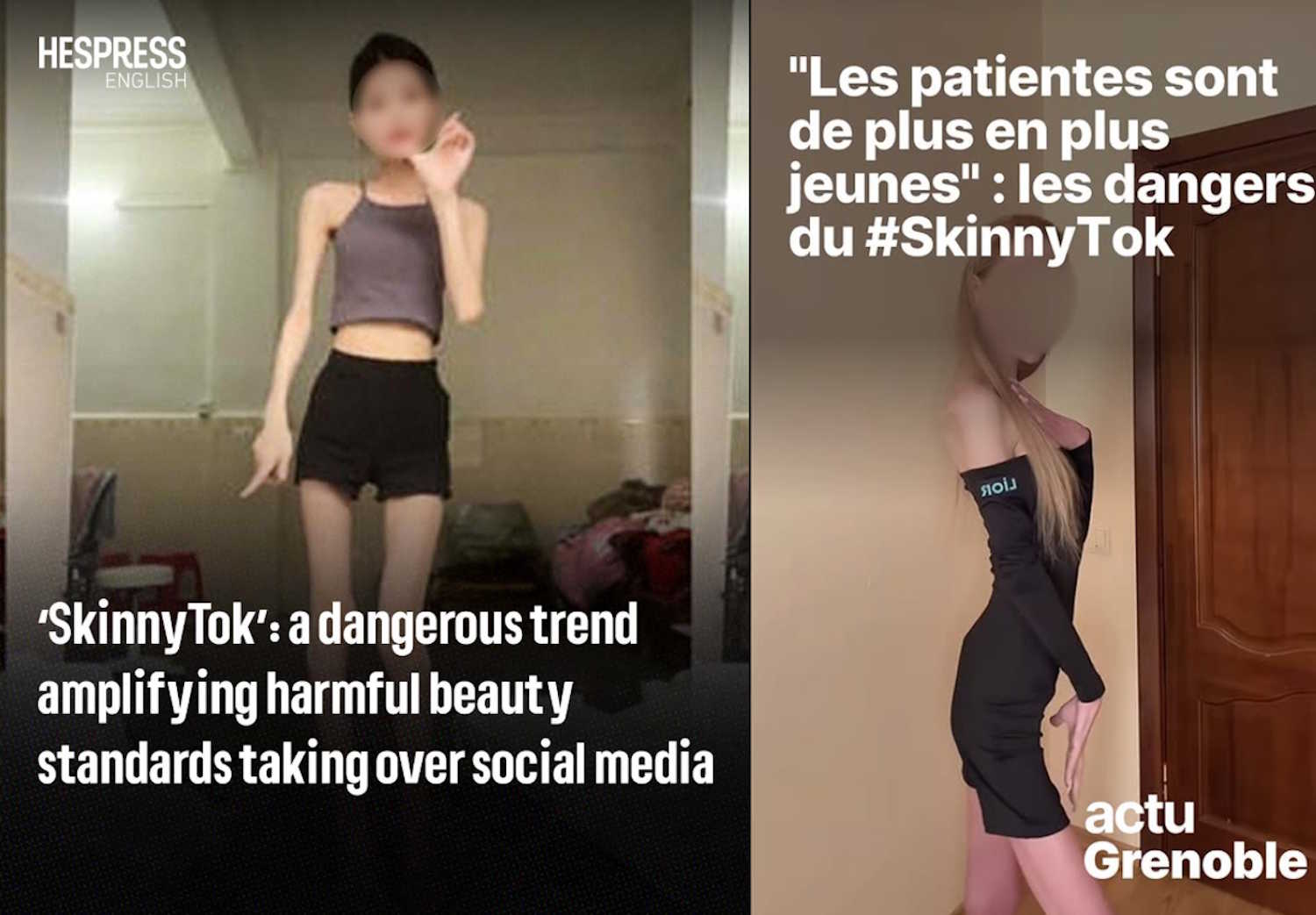The #SkinnyTok trend on TikTok promoted harmful body ideals, leading to TikTok's global block of the hashtag. However, new strategies and hashtags are needed to protect vulnerable users from harmful content.

The rise of harmful trends on social media has become an alarming issue, especially for young girls. One of the latest to surface is the #SkinnyTok trend, which has promoted dangerously thin body ideals as a form of personal success and value. With messages such as, “If your stomach is growling, it’s actually applauding you” and “You’re not a dog for rewarding yourself with a snack,” this trend encourages harmful behaviors that equate extreme thinness with happiness and acceptance. It’s a toxic ideology where “discipline,” “severity,” “truth,” “shame,” and “guilt” are often seen as virtues in the pursuit of weight loss.
In an unfortunate twist, young TikTok users have begun comparing their bodies, almost competing to see who is thinner, who eats fewer calories per day. The message is clear: thinness is synonymous with perfection and, by extension, personal success.
TikTok’s response to the #SkinnyTok trend: mental health concerns at the forefront
Thankfully, TikTok has recently taken significant steps to address this growing issue by globally blocking the hashtag #SkinnyTok. This action came after reports linking it to harmful content promoting extreme weight loss and anorexia. Users searching for #SkinnyTok now see a message directing them to mental health support resources, a positive but limited move to curb the spread of such dangerous messages.
However, the platform’s initial response was more subtle. Although TikTok’s official guidelines clearly prohibit content promoting eating disorders and harmful weight loss behaviors, these posts still managed to slip through the cracks. The platform allowed certain content on “weight management” to remain visible, provided it was age-restricted and didn’t appear in the main “For You” feed. This loophole allowed these harmful videos to circulate, albeit in a more concealed manner.
In response to growing concerns from digital authorities across Europe, including the European Commission and France’s media regulatory body ARCOM, there were calls to take stronger action. France, in particular, took a leadership role in raising this issue. Clara Chappaz, the French Minister of State for Digital Affairs, made a formal request to the European Union, leading to a campaign aimed at pressuring TikTok to block #SkinnyTok. By April, the hashtag was tied to over 38,000 public posts on the platform, according to data collected via Google.
On June 1st, TikTok confirmed it had voluntarily disabled the hashtag search feature. Chappaz celebrated the decision as “a collective victory”, though it came without any legal mandate, marking a significant but self-initiated response from the social media giant.
What’s the real impact of this move?
While TikTok’s decision to block the hashtag is a step in the right direction, it’s not a complete solution. The posts tied to #SkinnyTok were not individually deleted. Instead, users who try to search for the hashtag are now redirected to a page with mental health resources. This redirect is a positive change, but it is also limited. It doesn’t erase the presence of harmful content altogether—just makes it harder to find under that particular label.
The battle against harmful body standards is far from over. As one hashtag is removed, others emerge under different names. The latest example involves a play on words between “waste” (loss) and “waist” (waistline), spreading the same toxic messages disguised under a new label.
Furthermore, some U.S. states are working closely with the European Union to develop new, more radical strategies aimed at better protecting children and adolescents from harmful content online. The removal of #SkinnyTok is just the beginning, and the issue remains far from resolved. New hashtags will inevitably emerge as young people continue to navigate an increasingly toxic online world.
